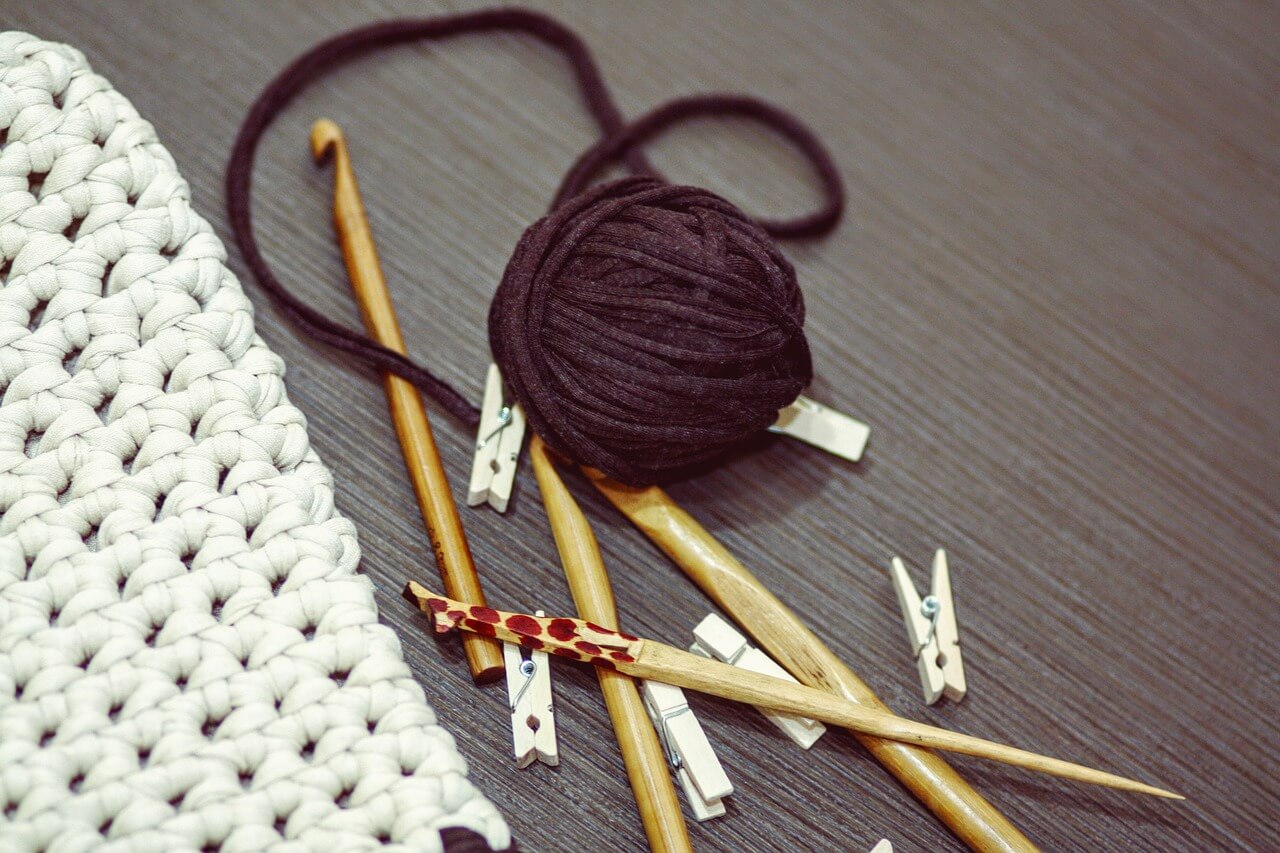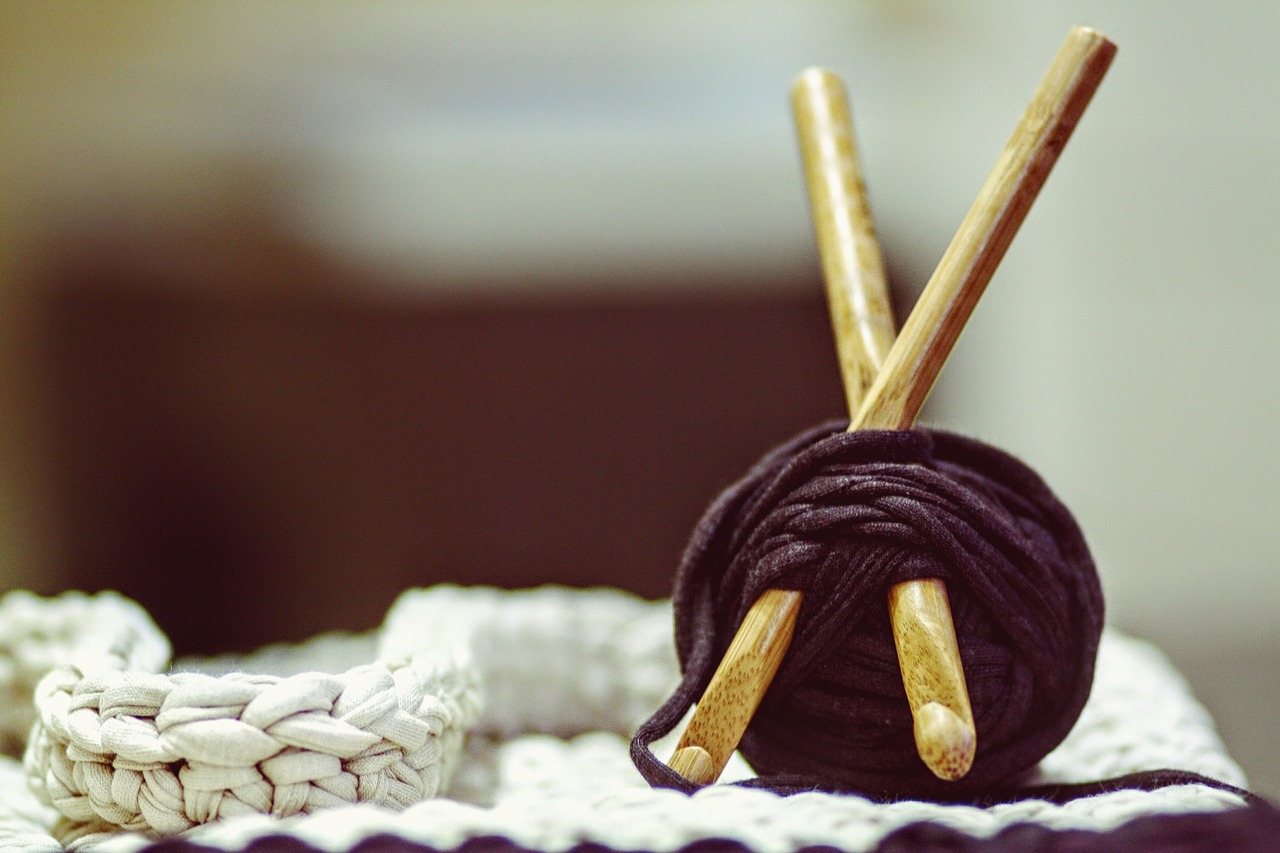If you’re all too familiar with the struggle of finding the perfect yarn color for your next project, you’ve come to the right place. Dying cotton yarn is surprisingly simple, even if your DIY skills are minimal. This article talks about which dyes to use, and how to dye yarn both naturally and with store-bought dyes (including an instructional video below).
What You'll Learn Today
What Can I Use to Dye Cotton Yarn?

If you’re using 100% cotton yarn, any craft-store fabric cotton dye will do. You can even use the same kind of dye that comes in a tie-dye kit.
It’s important to know that plant and animal fibers react differently to dyes. So the same dye you use for wool, for example, will not work well with cotton.
Using partly synthetic cotton yarn is a different story, but you should still be able to find what you need at your local craft shop. Just make sure to read the labels on the fabric dyes to see which kind of fabrics it works best for.
What is the Best Fabric Dye for Cotton?
Avid DIY-ers all have their favorite fabric dyes from years of experimenting. Here are some of the most popular cotton fabric dyes on the market:
- Procion MX by Jacquard: This dye is made for any natural fabric, so 100% cotton yarn will work well. A lot of people love how vibrant and long-lasting their colors are.
- Rit All-Purpose Dye: This fabric dye is designed for all fabrics, from natural to synthetic. Some people think that this dye doesn’t last as long and isn’t as bright. Others say that the key is to carefully follow the instructions for best results.
- Tulip One-Step Dye: These come in super convenient tie-dye kits. You just add water to the dye, which comes in powder in a squeeze bottle.
Cotton Yarn Dyeing Process: Step by Step

Before you start, you’ll need:
- Fabric dye
- Yarn
- Saucepan – You should never use the same pans you use for food prep to dye fabric in.
- Dust mask – It’s always best to use a mask when working with powdered dyes to prevent inhaling harmful chemicals.
Step 1: Wind the Yarn Into a Hank
Tangled-up yarn is your worst enemy when you’re using it for any project. You’ll need to wind it up and secure it properly before you do anything.
Start with a ball of yarn, and wrap the entire skein around a chair. Then secure it with smaller pieces of yarn.
Step 2: Wash the Yarn
This is a step that often gets overlooked. Store-bought yarn often has a waxy residue that comes from the manufacturing process.
Washing your yarn will make it noticeably fluffier and will get rid of lingering residue. To do this, just cover the hank of yarn with warm soapy water and simmer it in a saucepan on the stove.
After it simmers for about an hour, take the yarn out of the pot and let it dry. The yarn may have left some color in the water, which is normal.
Step 3: Heat Water
Simmer (don’t boil) more water on the stove. Make sure there’s enough to cover the yarn.
Step 4: Add Dye to the Water
Follow the instructions on the dye for how much dye to use. Depending on whether you want a vibrant or more subdued shade, you can adjust the amount of dye accordingly.
Step 5: Add the Yarn
Put the yarn in the water and swish it around with a spoon to make sure the dye distributes throughout the yarn. Do this for about 30 minutes.
Step 6: Rinse the Yarn
Start running the yarn under warm water. Like with tie-dye, decrease the temperature slowly as the water becomes more clear.
For an alternative method, here’s a video that demonstrates how to dye cotton yarn using soda ash and powdered fabric dye.
How Can I Dye Cotton Yarn Naturally?
There are a few different ways to dye yarn naturally. It all depends on how much time and effort you’re willing to spend on your project.
If you have the time, consider dying your yarn with food items.
You can use foods like:
- Black beans
- Coffee
- Avocados
- Cabbage
- Beets
- Turmeric
Check out this Martha Stewart article on how to dye yarn with food items. The process is especially rewarding for DIY-ers who don’t mind a bit of trial and error with their projects.
If you’re not quite on Martha Stewart’s DIY level, no judgment here! A quick Google search for “Organic Cotton Fabric Dye” will reveal a market full of natural options.
Can You Dye Cotton Yarn With Kool-Aid?
You may have seen some articles floating around the internet in recent years about dying fabric with Kool-Aid. While finding things in your pantry to dye fabric with is awesome and resourceful, Kool-Aid won’t work in this case.
Kool-Aid only works well with animal fibers such as wool. Plant-based material like cotton doesn’t work well with acid-based dyes.
When it comes to dying your own yarn, there isn’t a single right or wrong way to do it. What works best for other people may not work well for you.
The best strategy is to research, come up with your best guess, and give it a shot. If it doesn’t turn out the way you want it, consider it a learning experience, make adjustments, and try again.
If you are interested in learning more about how to grow cotton, here is our guide.
Frequently Asked Questions

There are many ways to dye cotton yarn, including simple immersion dying, to create a uniform color. You might also wish to experiment with tie-dyeing, space dyeing, sequential dipping or even painting by hand. These techniques allow you to create a multicolor effect. You could also experiment with the vegetal dyes that were used by Native Americans!
These dyes have a unique reactive nature that allows them to bond with the cotton fibers chemically. This deep bonding process produces especially vibrant and long-lasting colors.
Cleaning is the first, and arguably most important, step in preparing cotton yarn for dyeing. Give it an initial hand-washing with mild detergent in hot water to remove traces of oil or sizing that might prevent dye absorption. Rinse it thoroughly and allow it to completely air dry before dyeing.
Be sure to use the right amount of dye. Generally speaking, you should use 2-4 ounces of dye product per pound of yard; however, this may be different from one product to another, so be sure to read and follow product packaging instructions closely. You should also be sure that the water you use is very hot and that you leave the yarn in the dye bath for the amount of time needed to attain the desired level of color intensity. Generally, speaking, a minimum of twenty minutes is necessary for full color absorption, but again, read and follow manufacturers’ instructions carefully for best results.
Before you wash your dyed cotton yarn for the first time, set the color by soaking it in a 50/50 mixture of cool water and white vinegar. Let it soak for half an hour before you wash it. Remember that hand-washing with a very gentle, natural laundry soap is always best for retaining color. For best results, soak garments made with dyed cotton yarn in clean, cool water for five minutes before you begin hand-washing. Add the recommended amount of laundry soap to the water and then clean your cotton yarn garment gently for about ten minutes. You can do this by agitating the water by hand, or if the item is small enough, put it in a large jar with a tight lid and shake it. Pour off the soapy water and run clean, cool water through the garment until all of the soap has been rinsed out. Roll your cotton yarn garment in a clean, dry towel and press out excess moisture. For best results, lay the garment flat on a rack or screen to air dry. Do not dry or store dyed cotton garments in harsh sunlight. This will fade the dye.